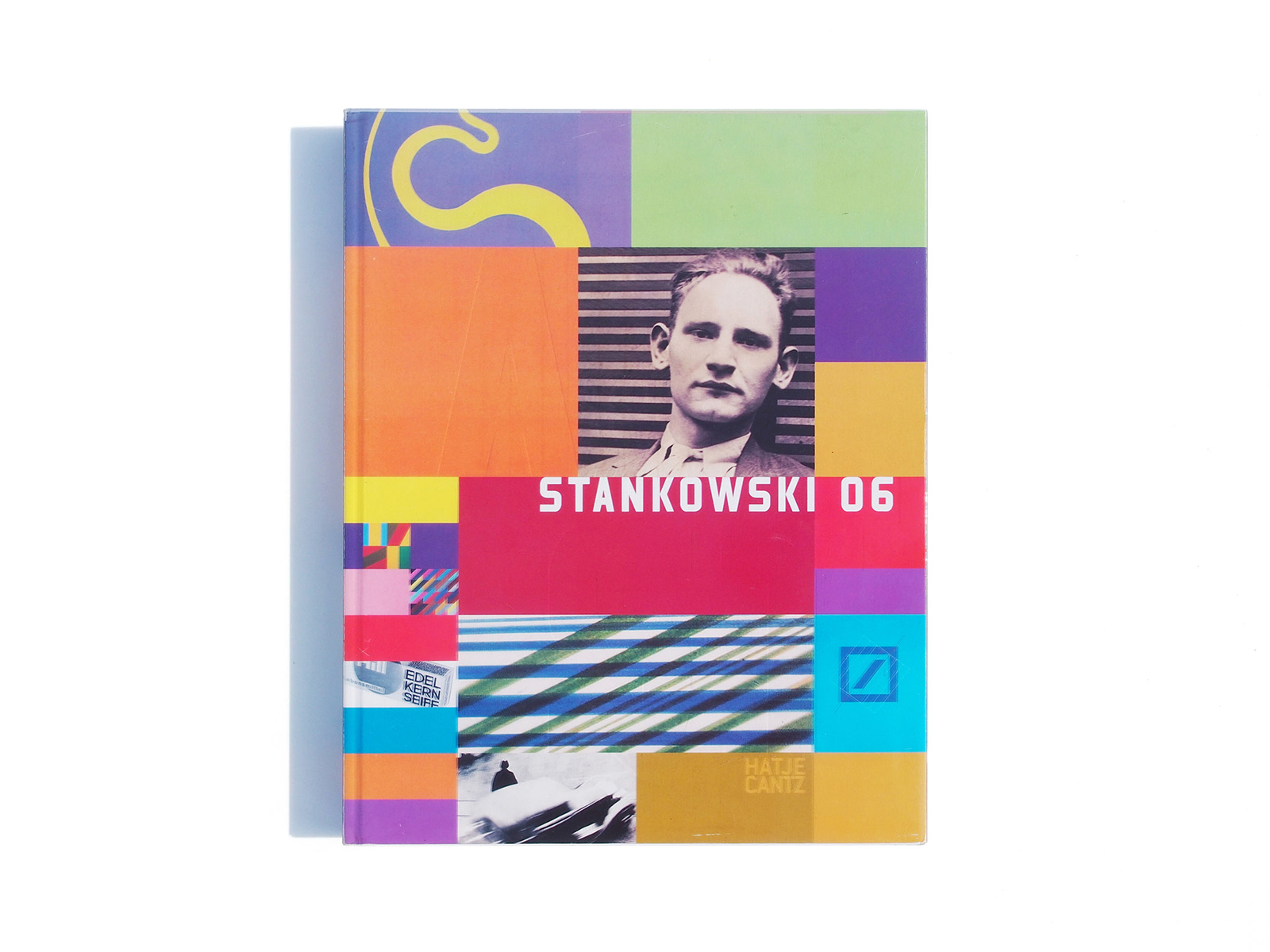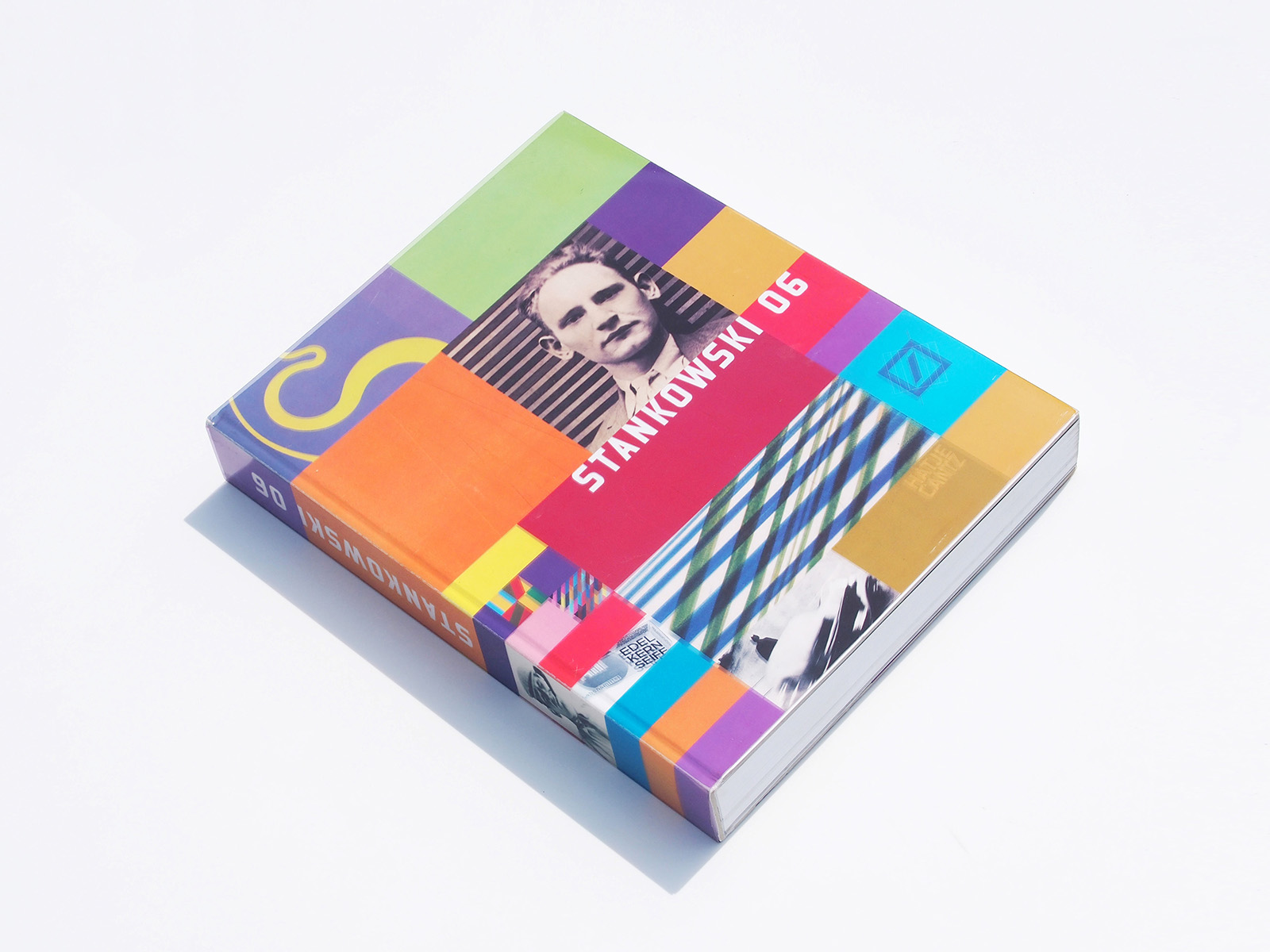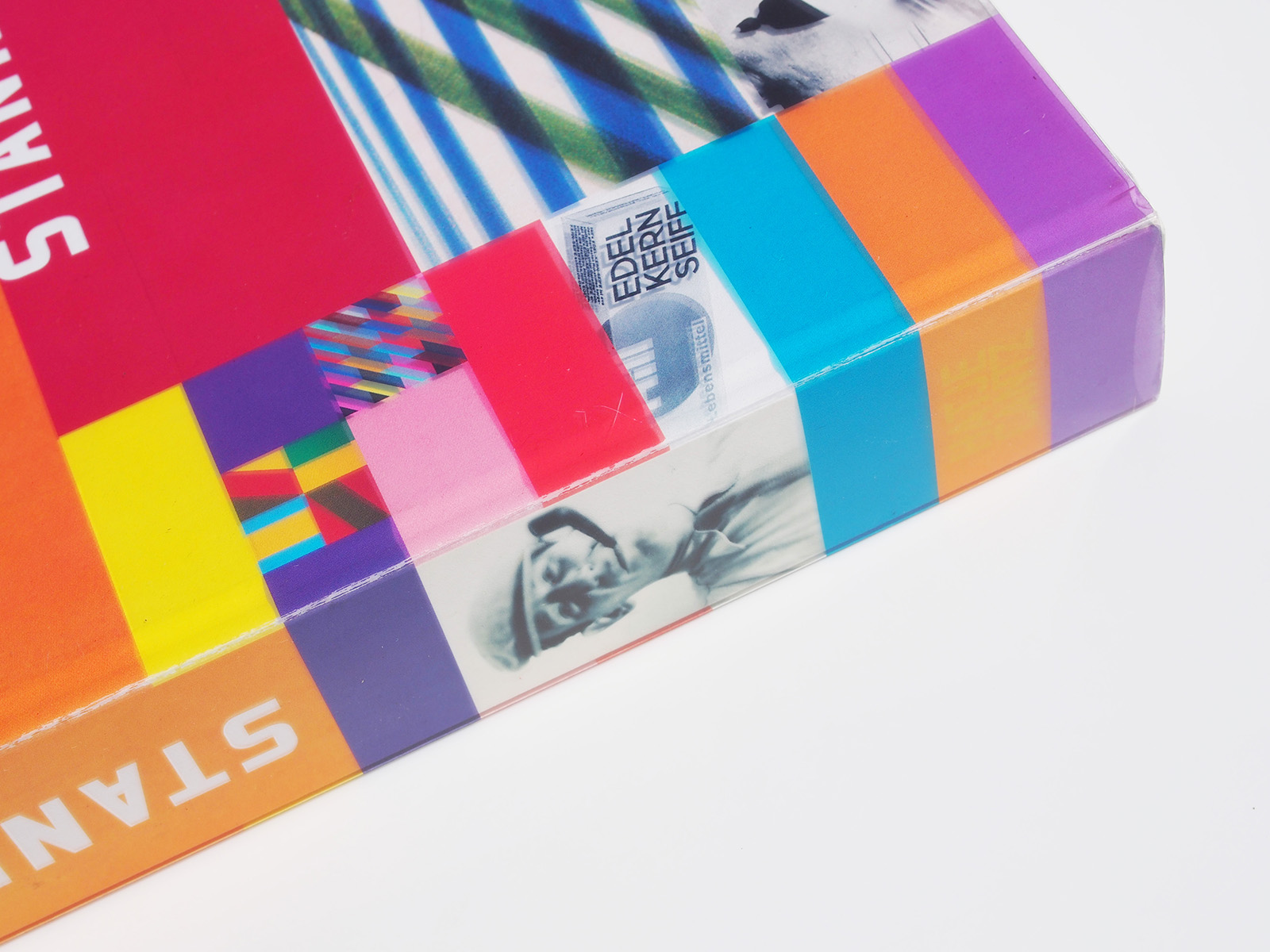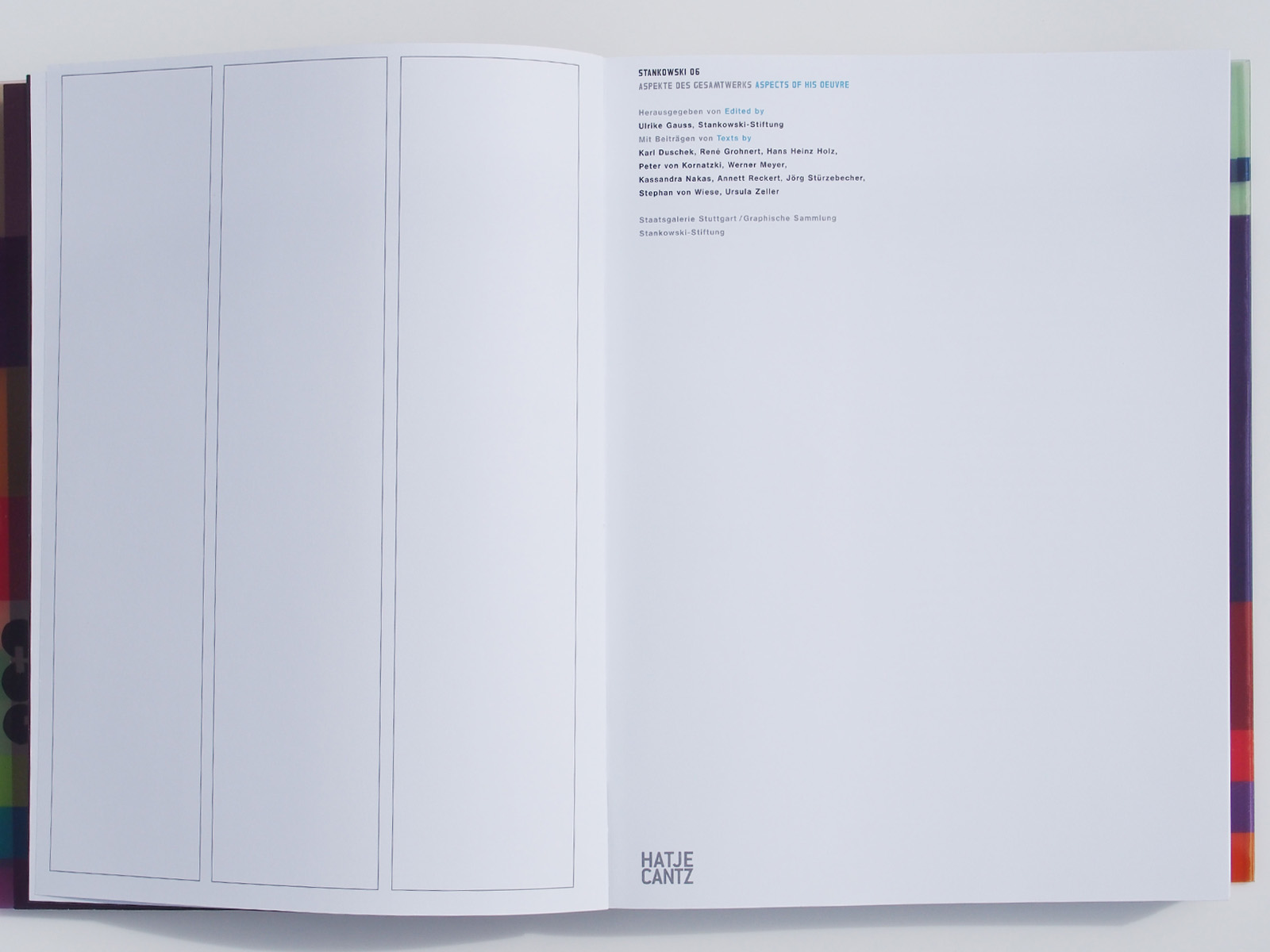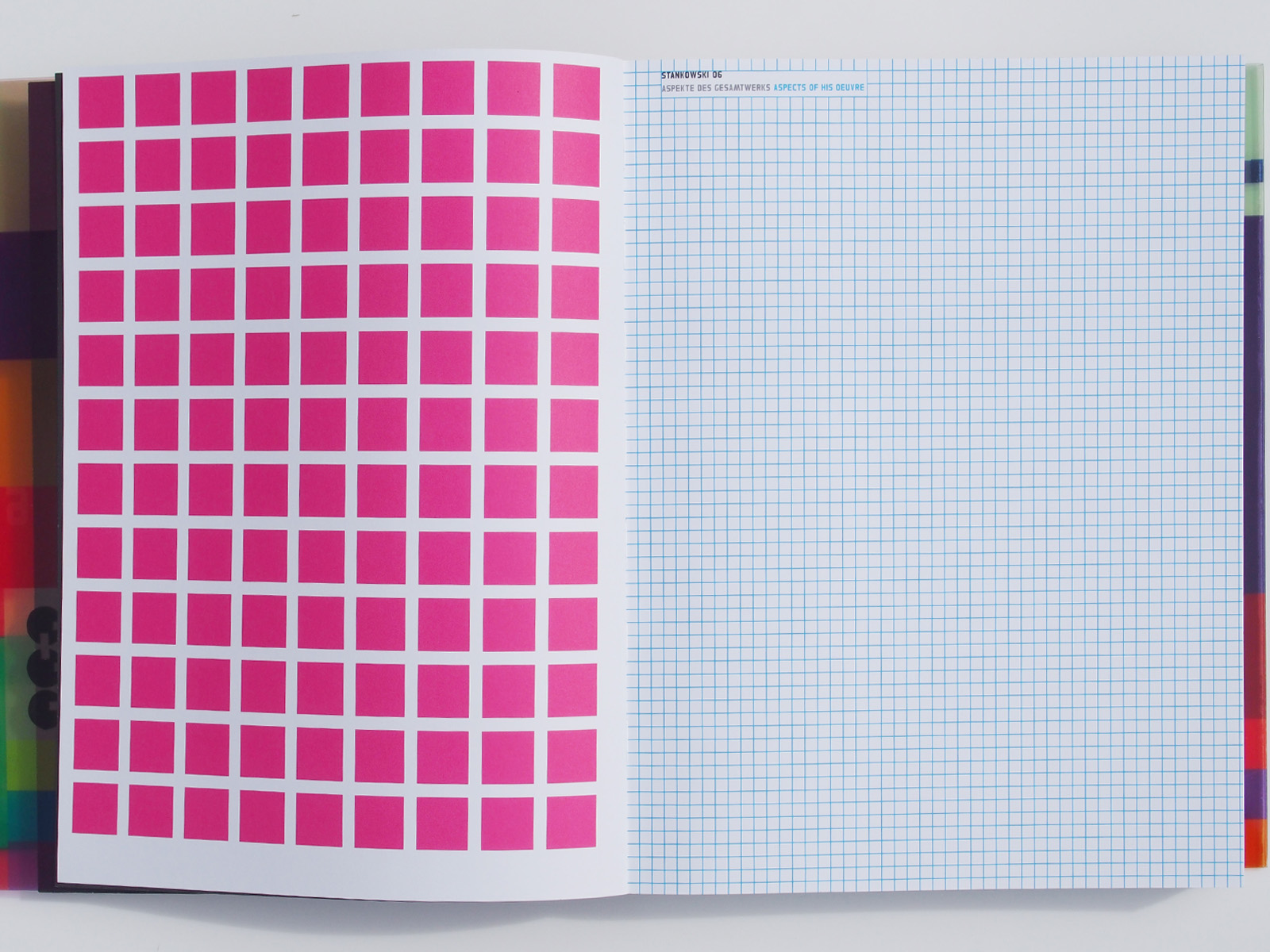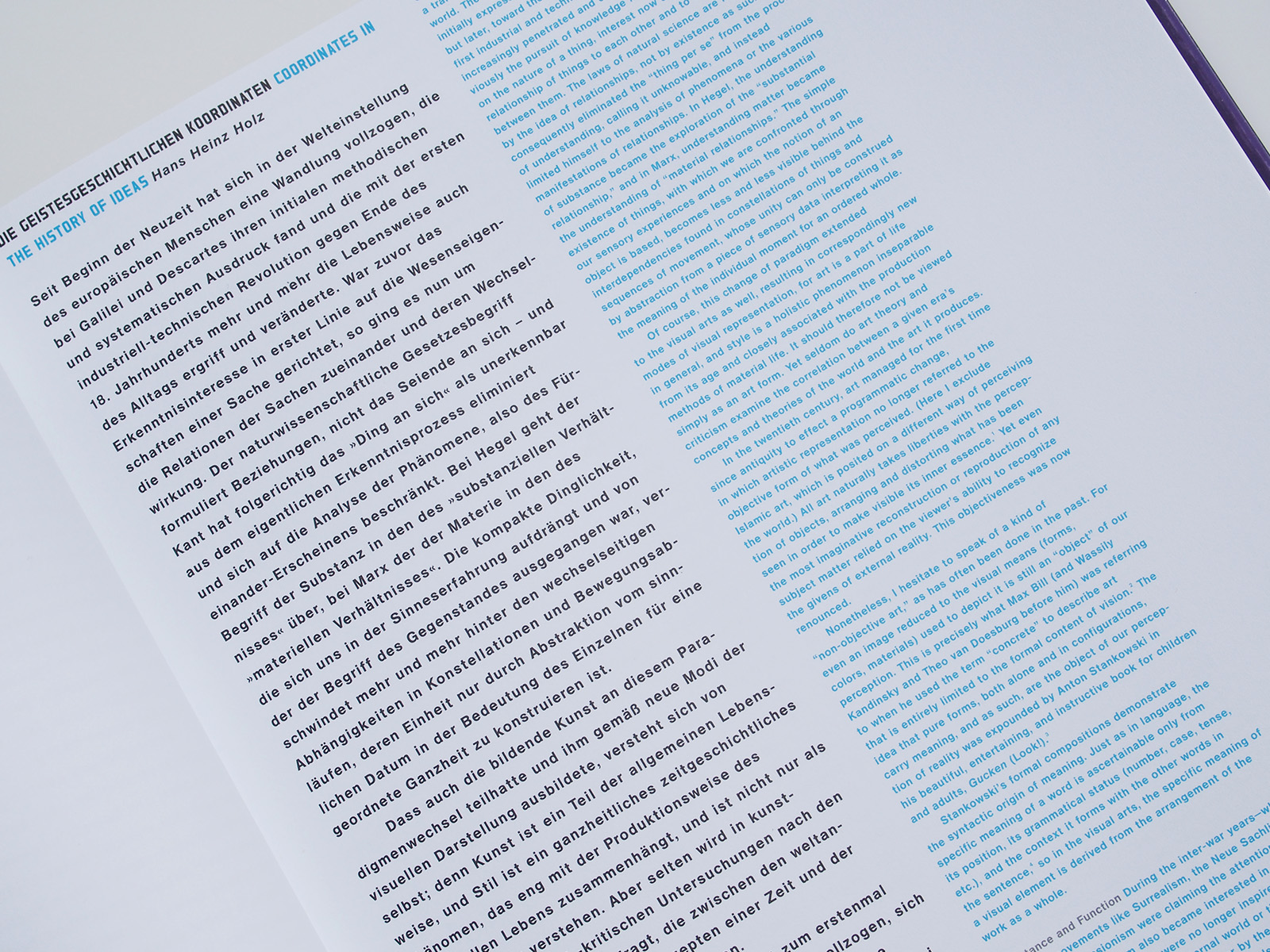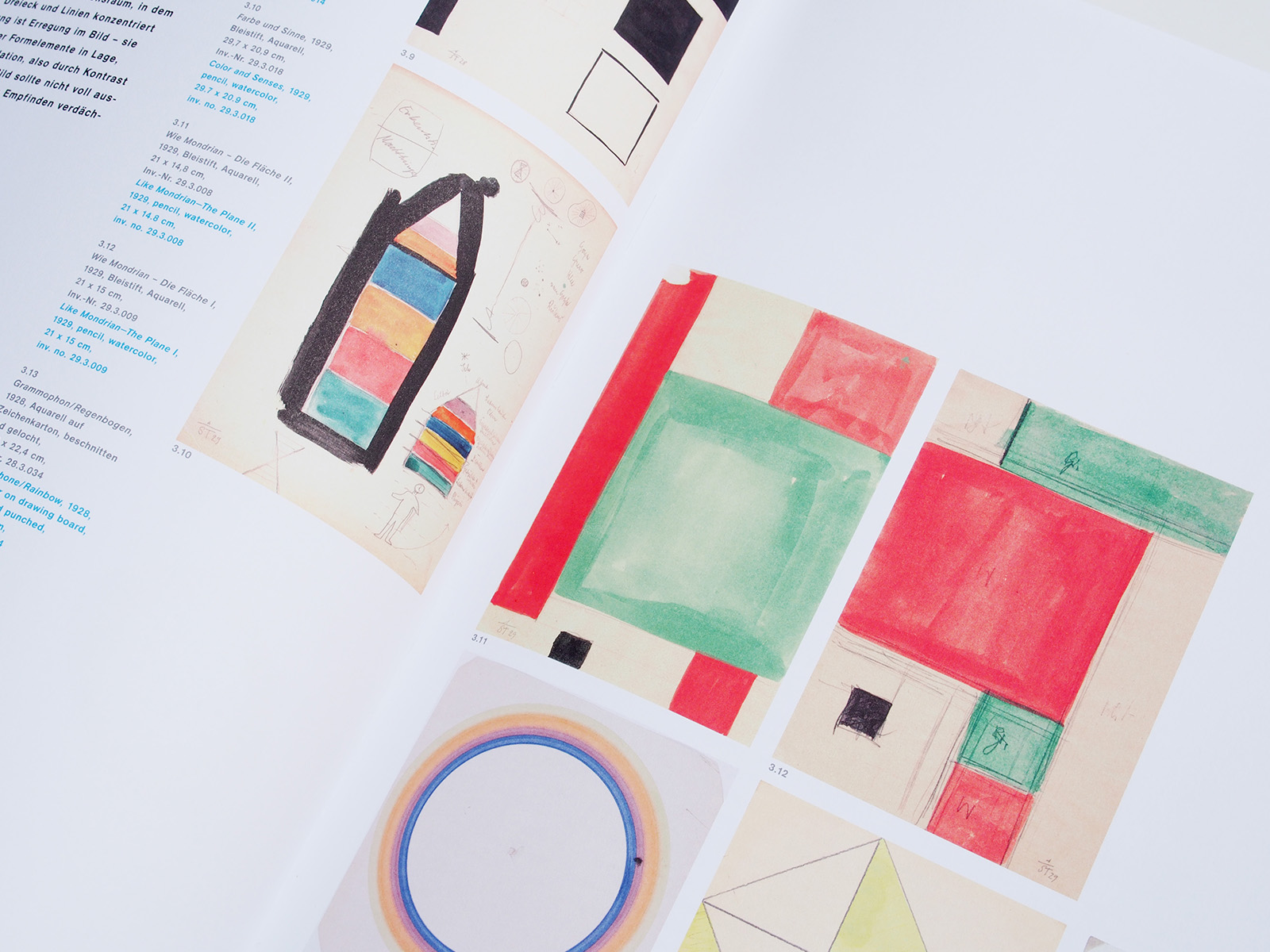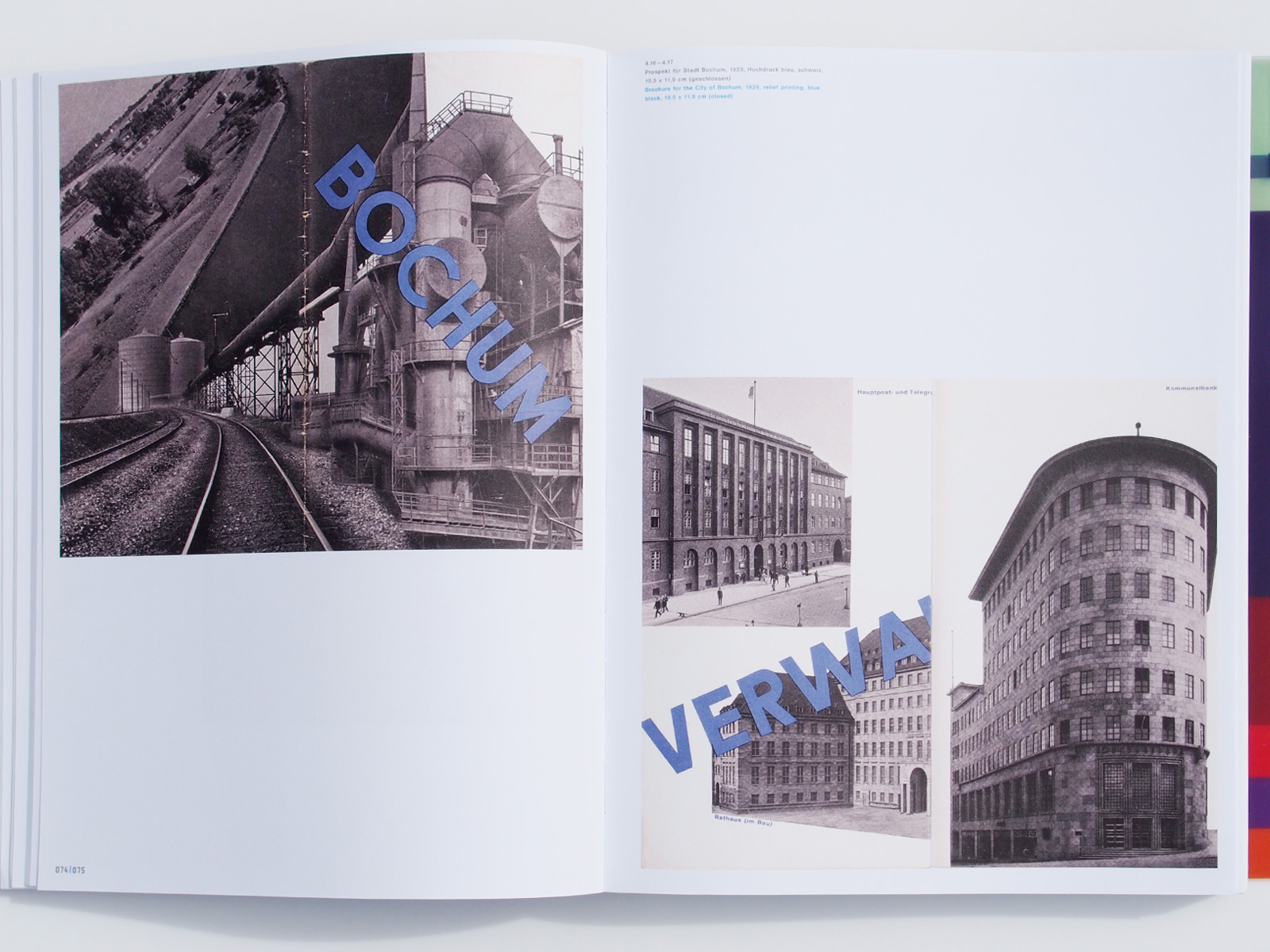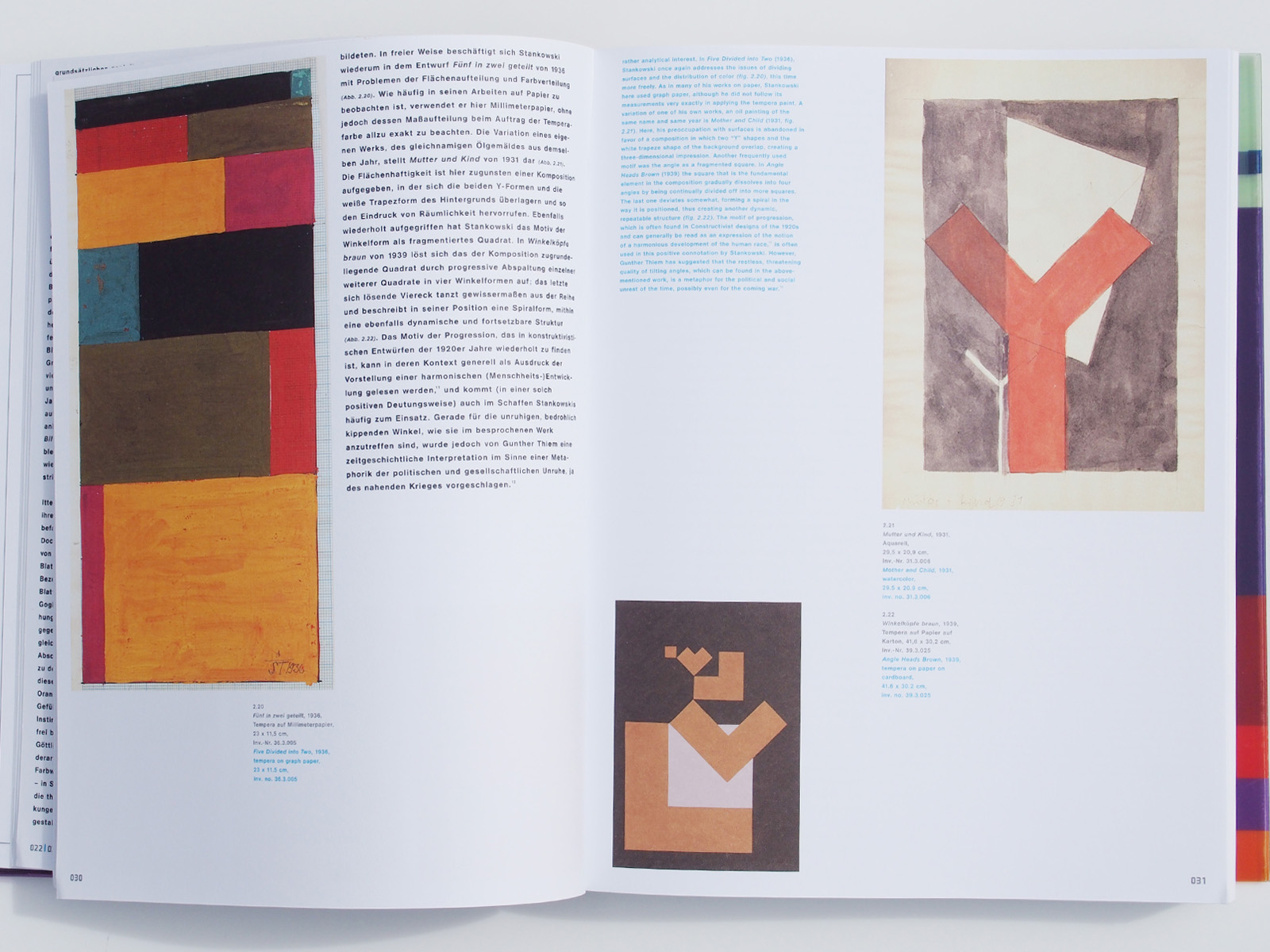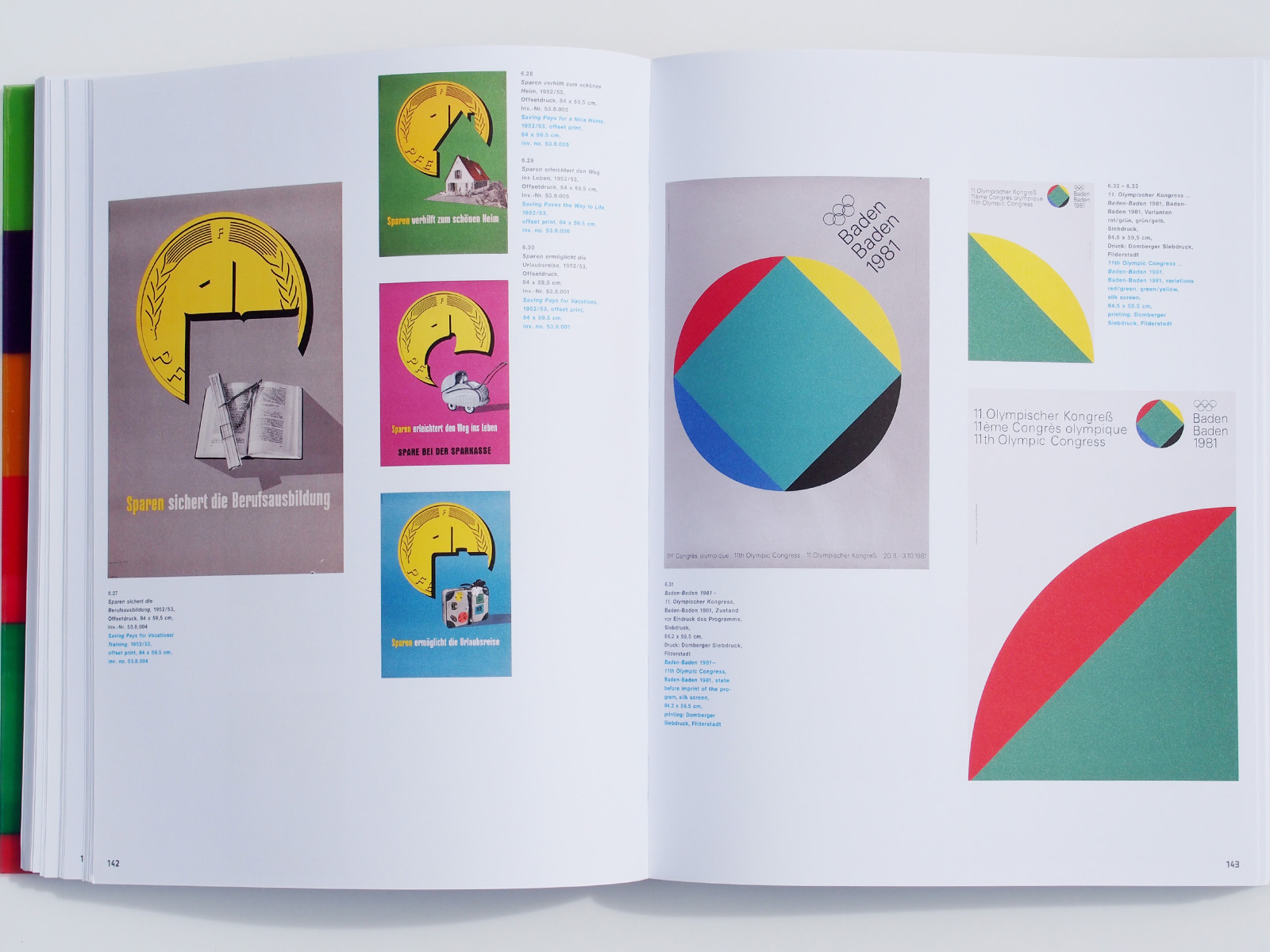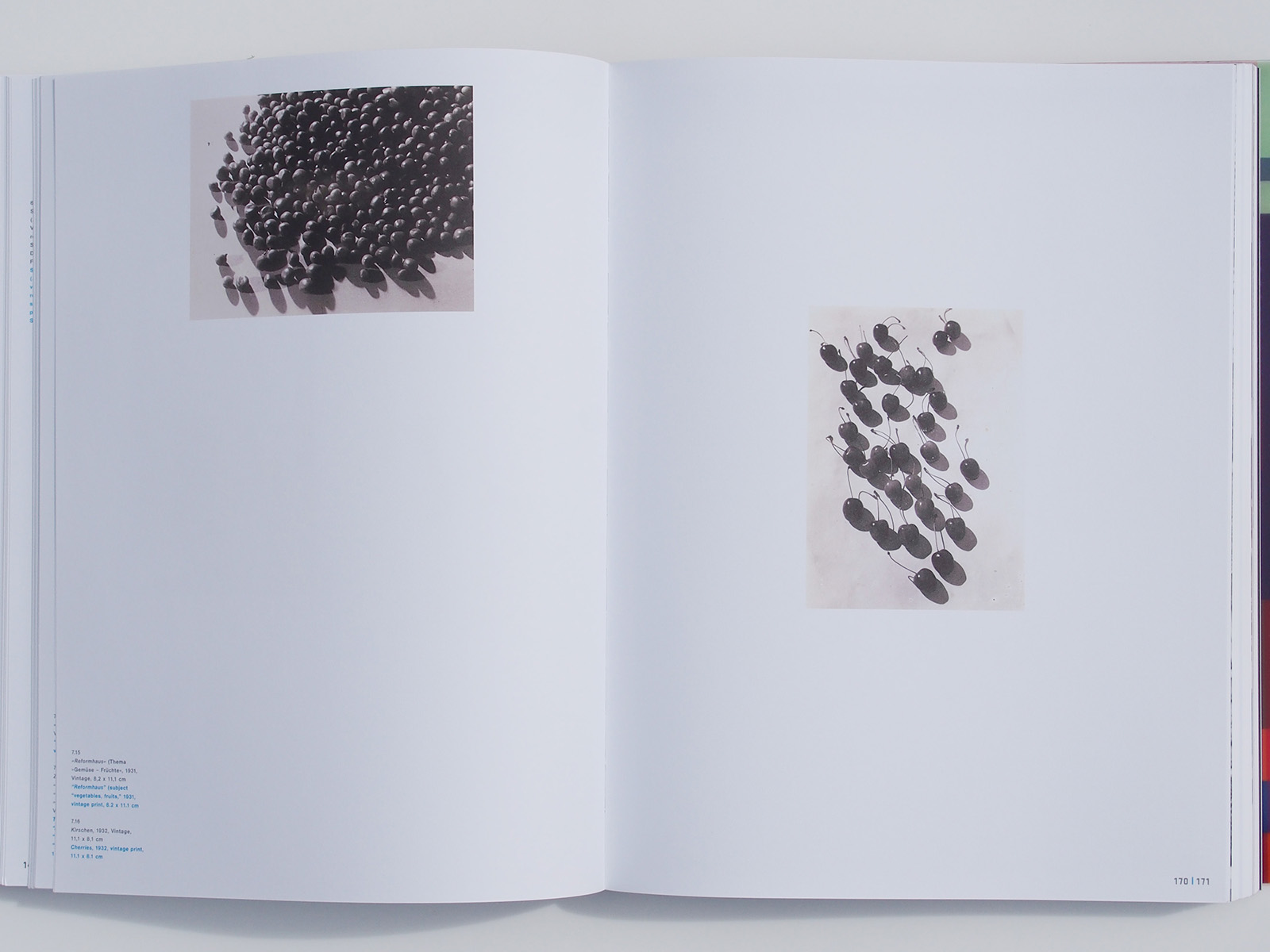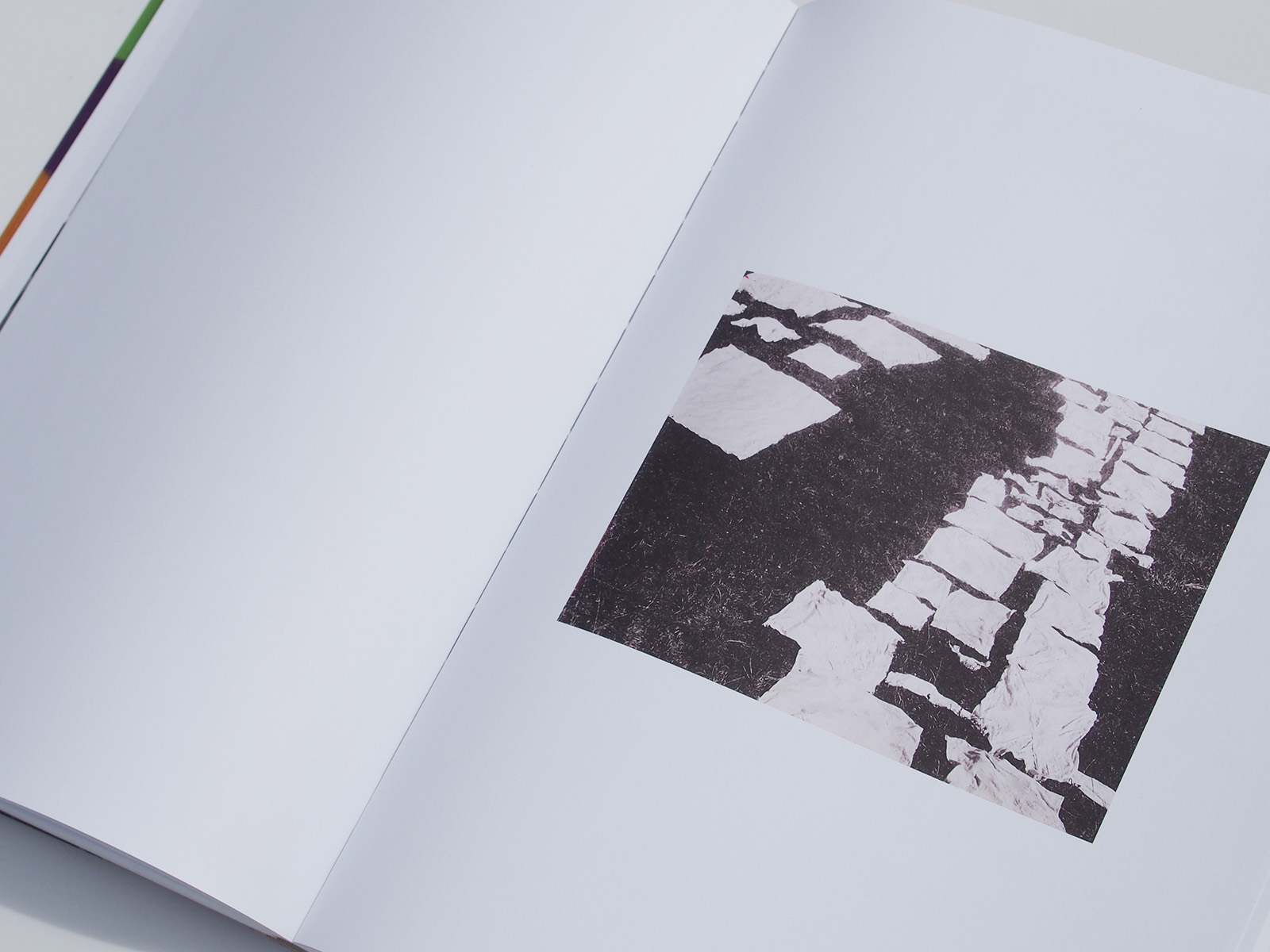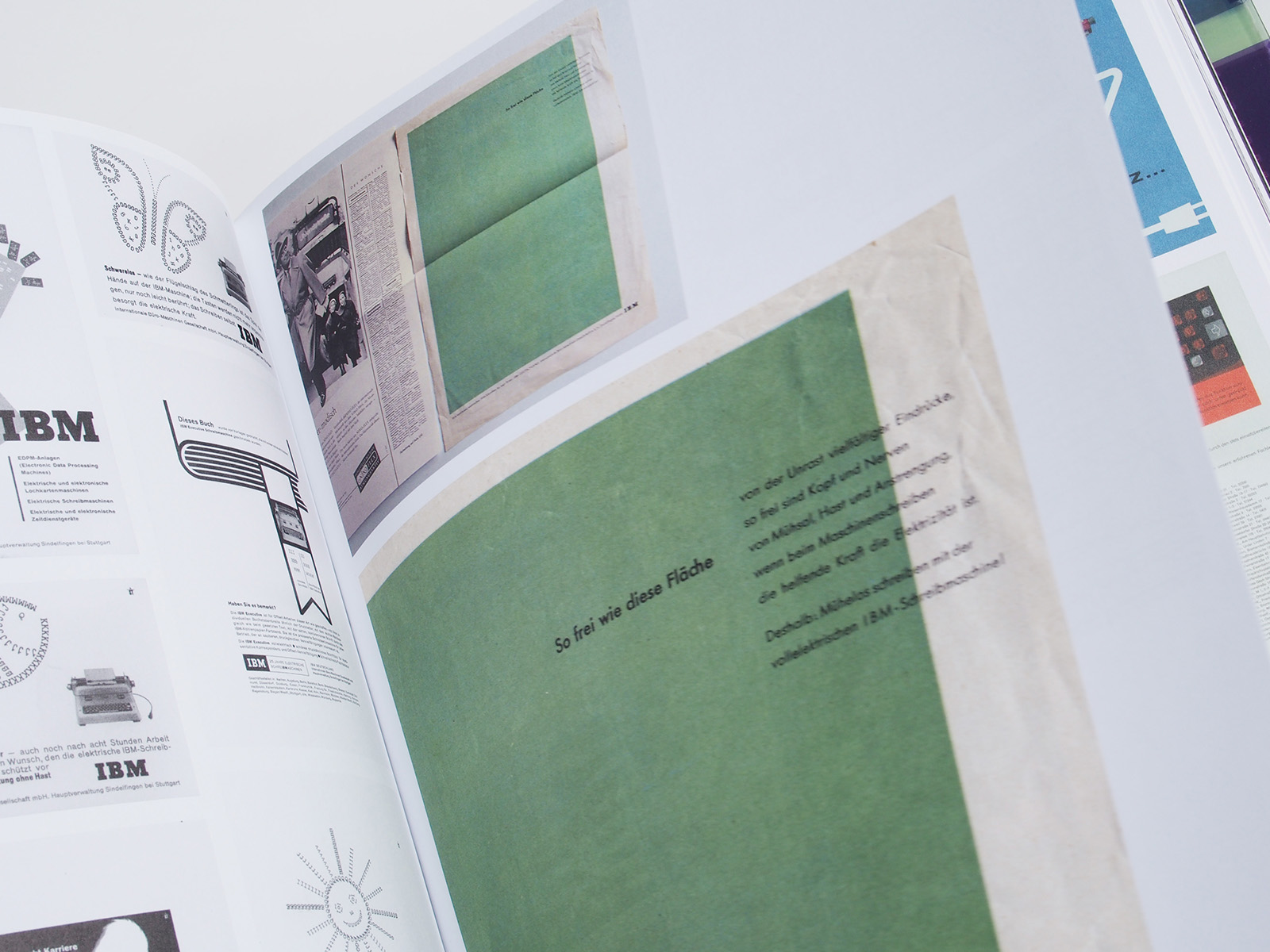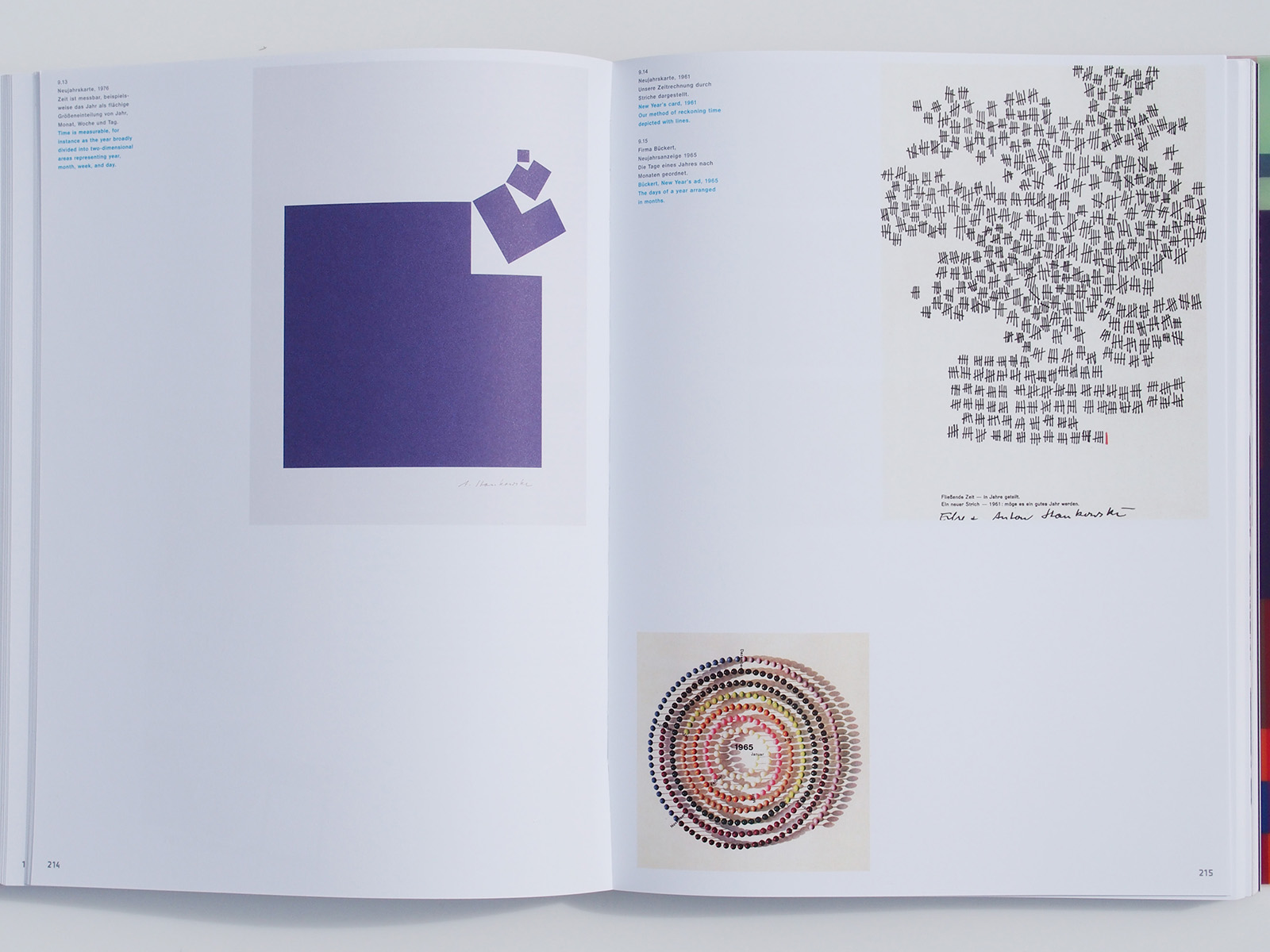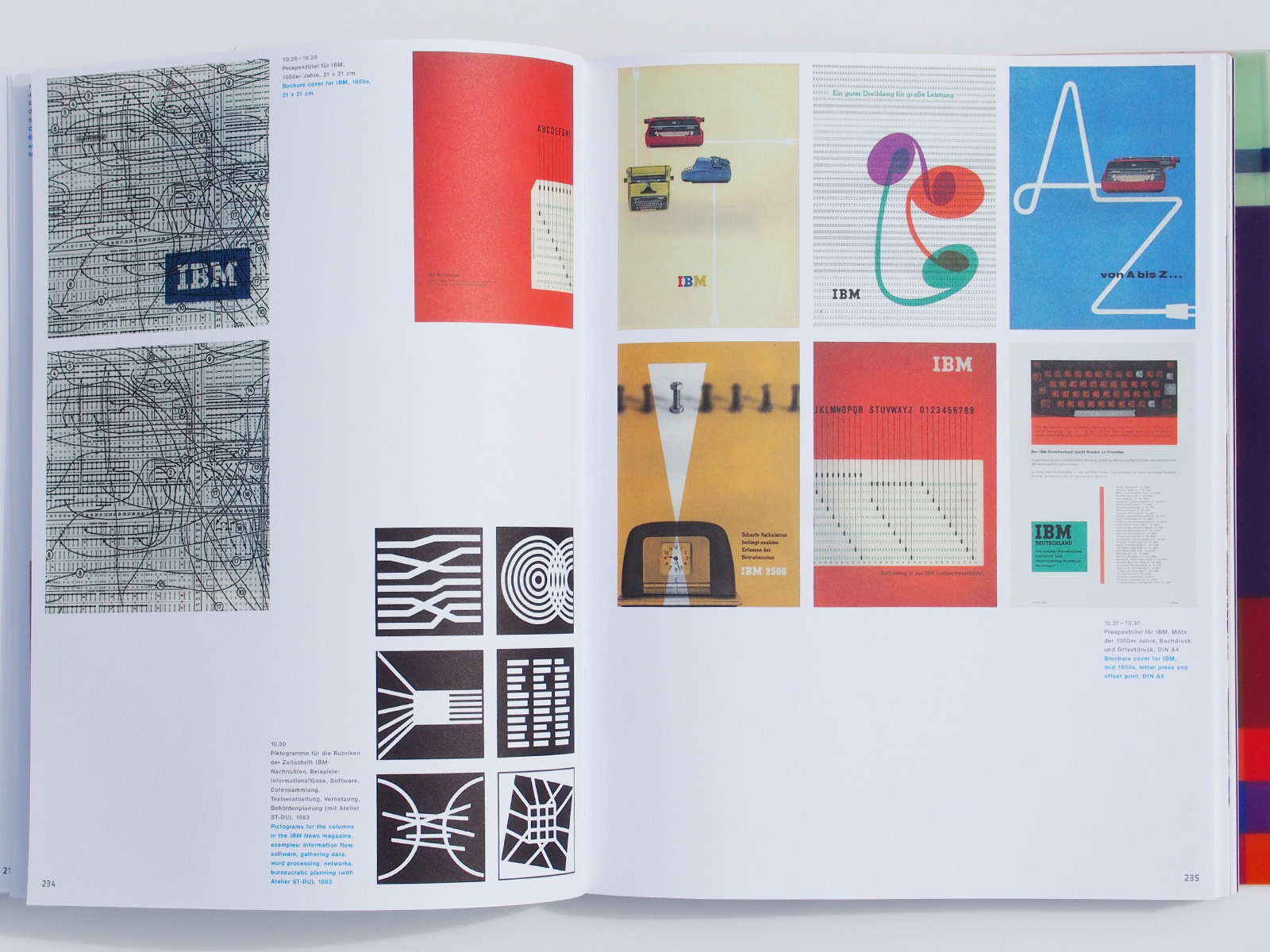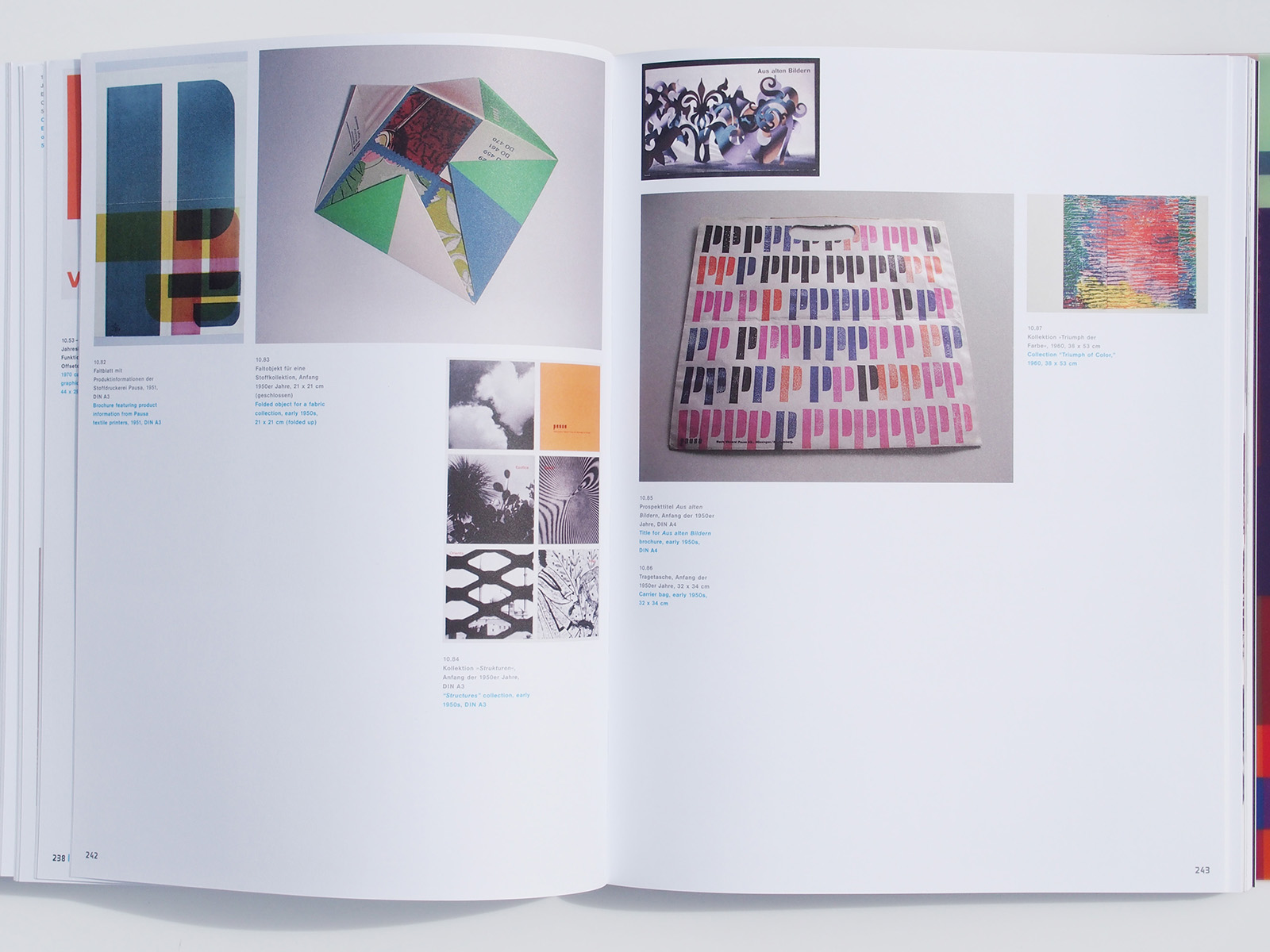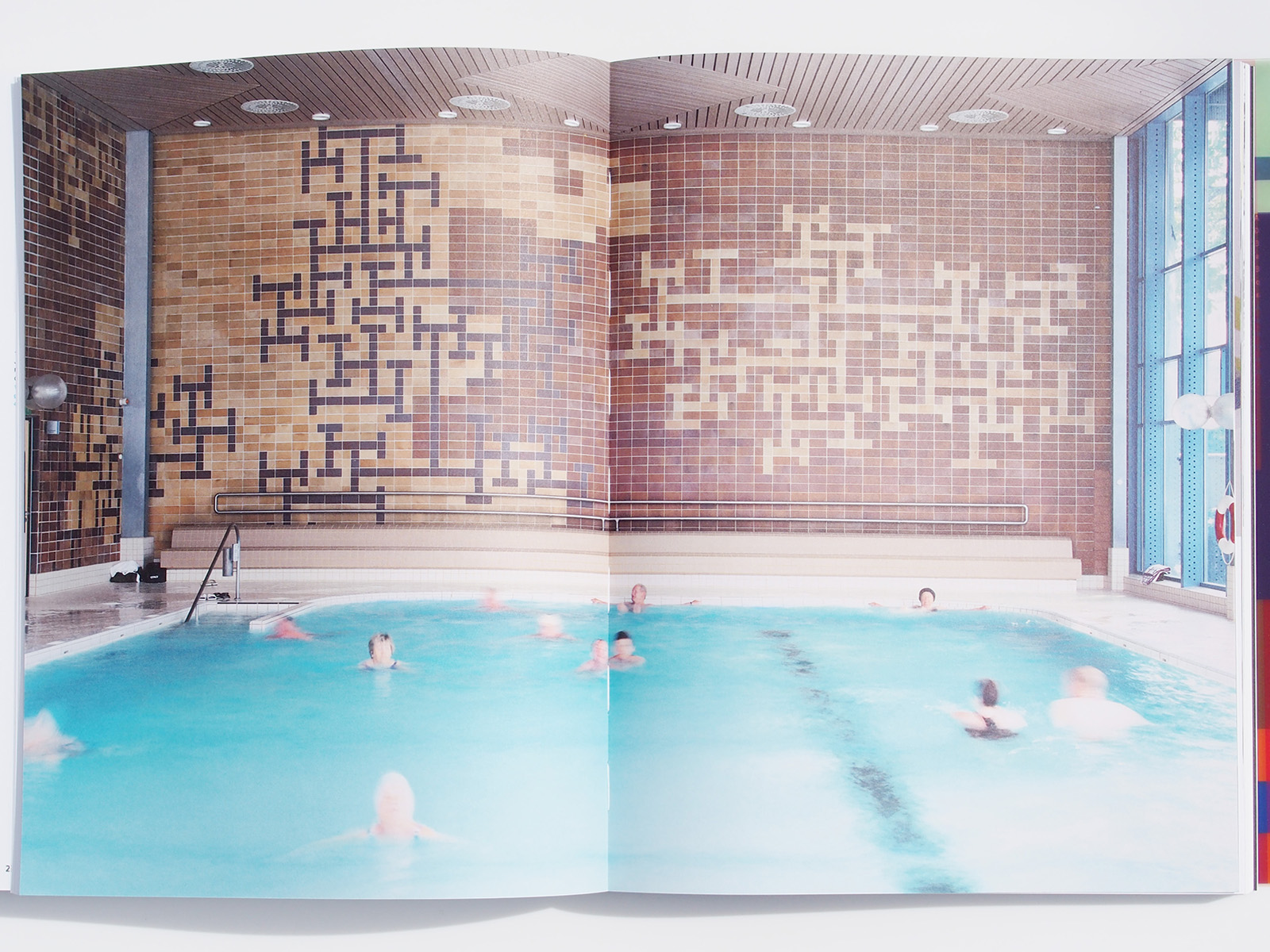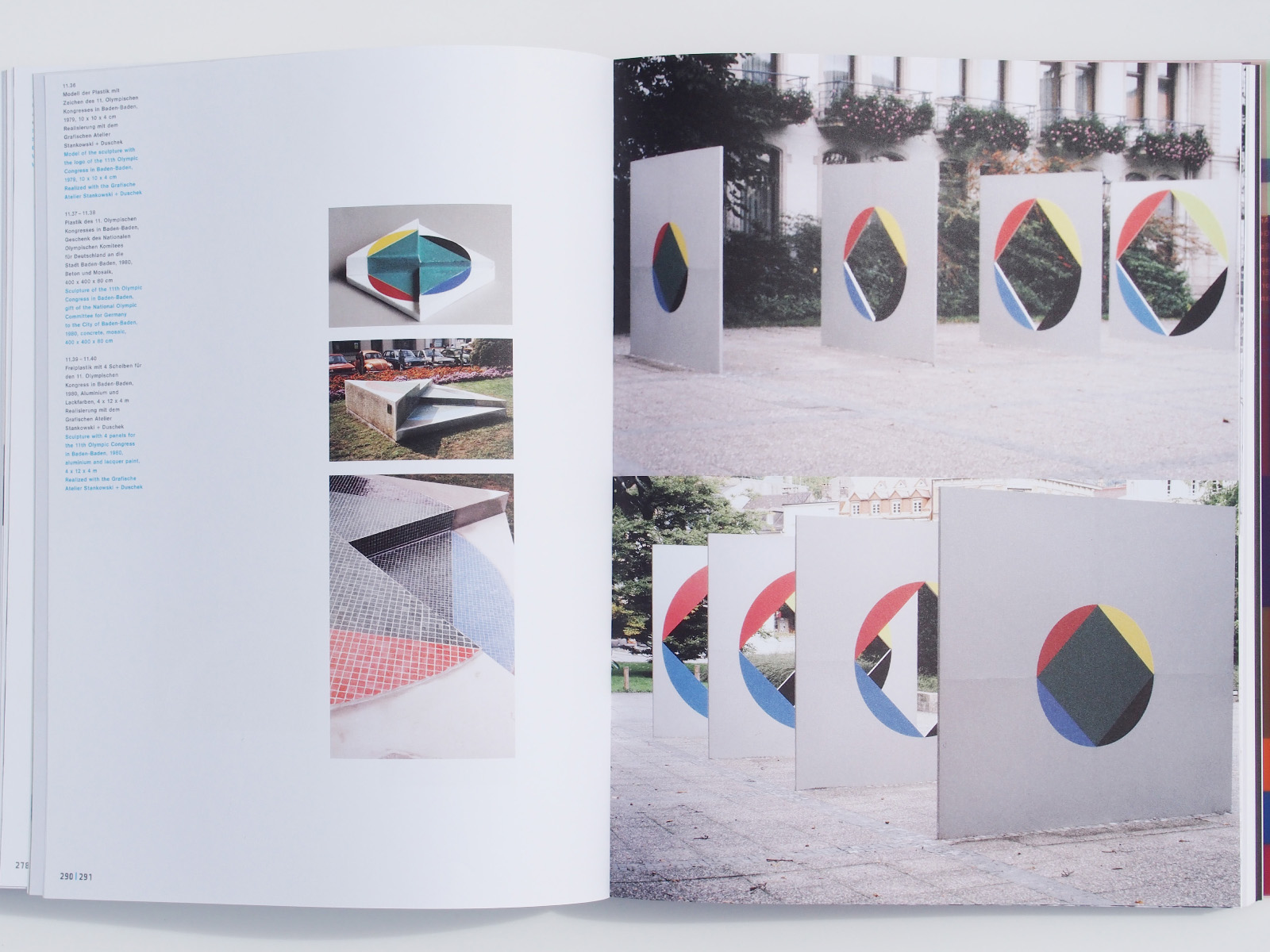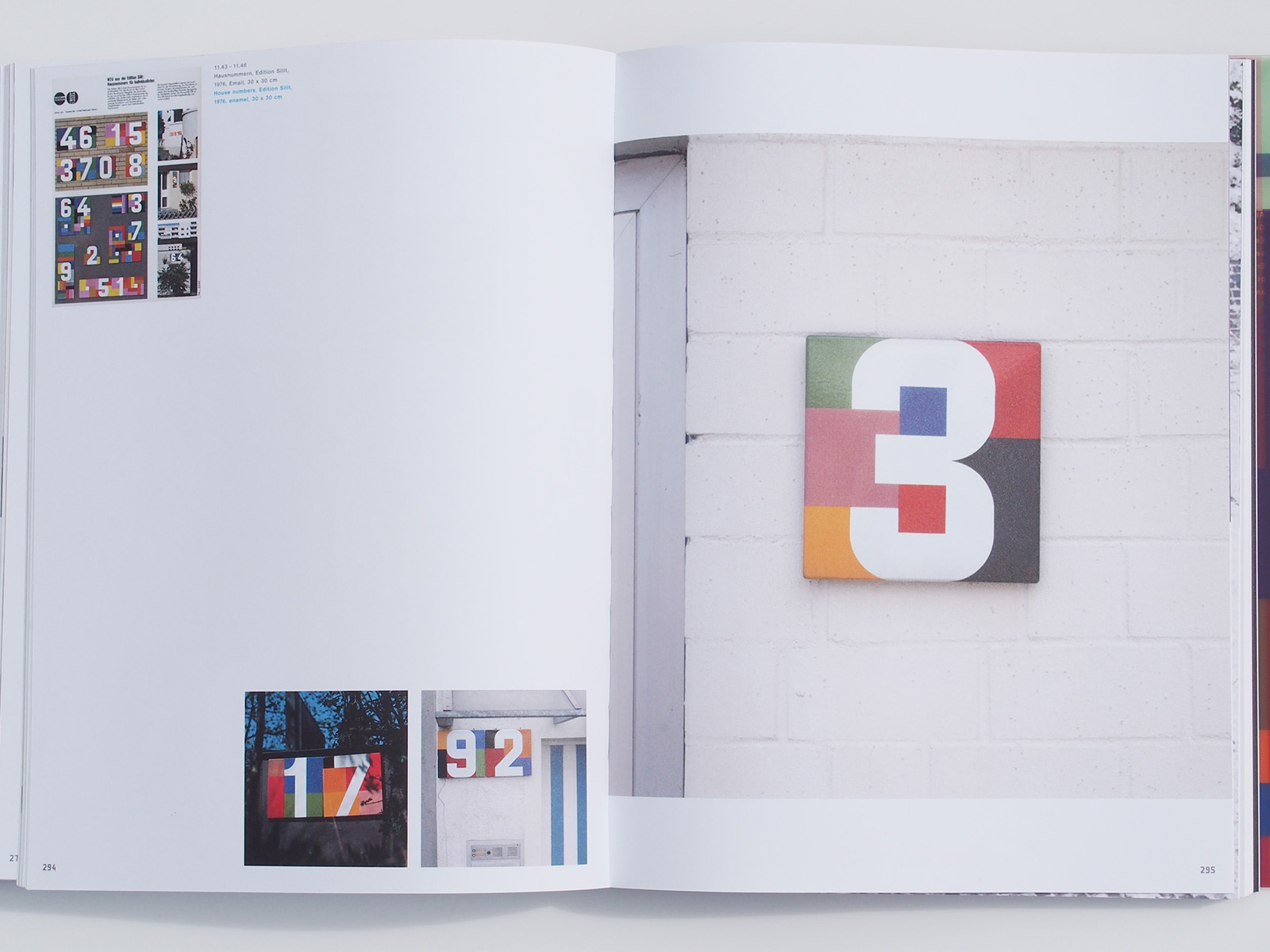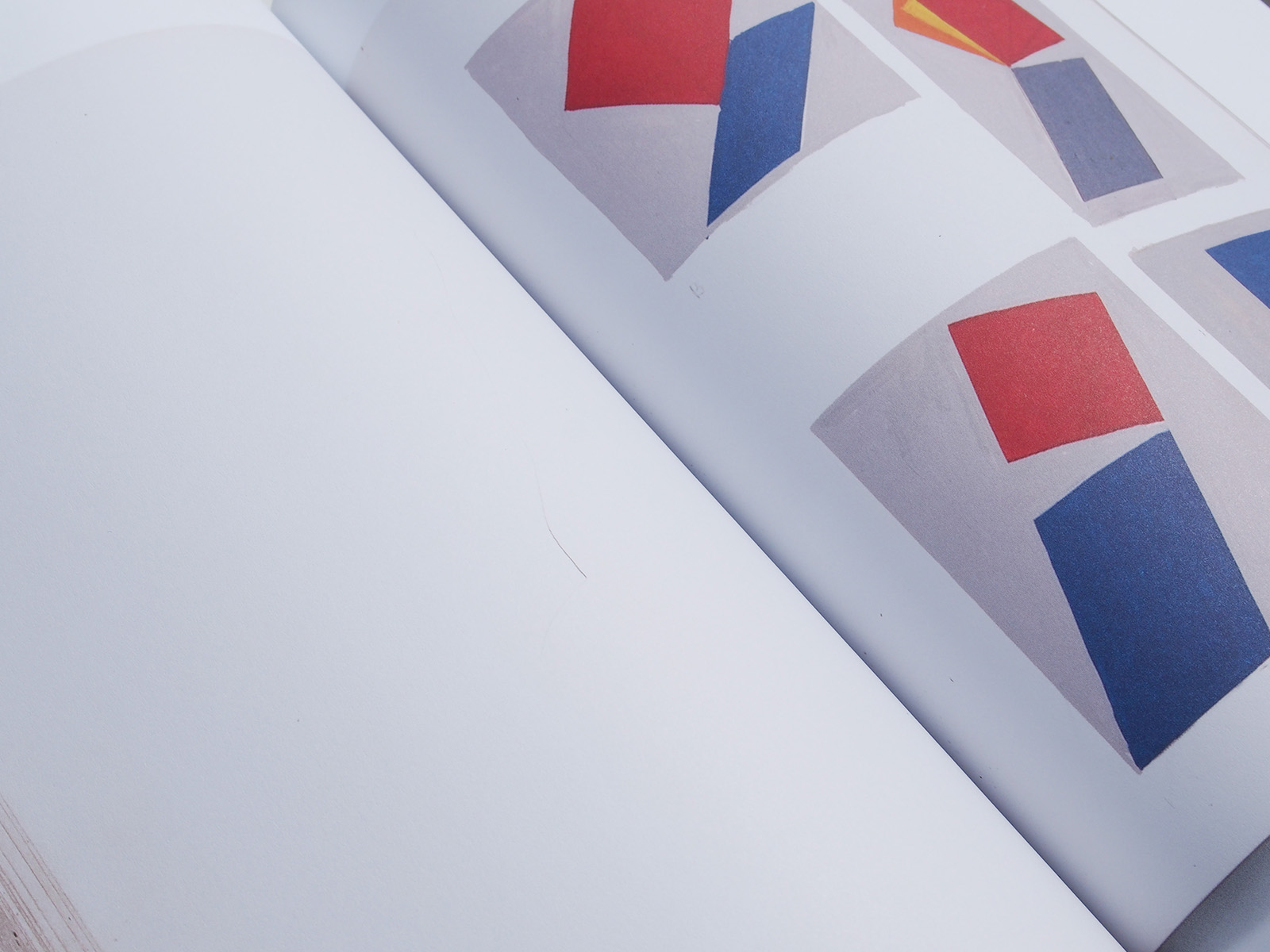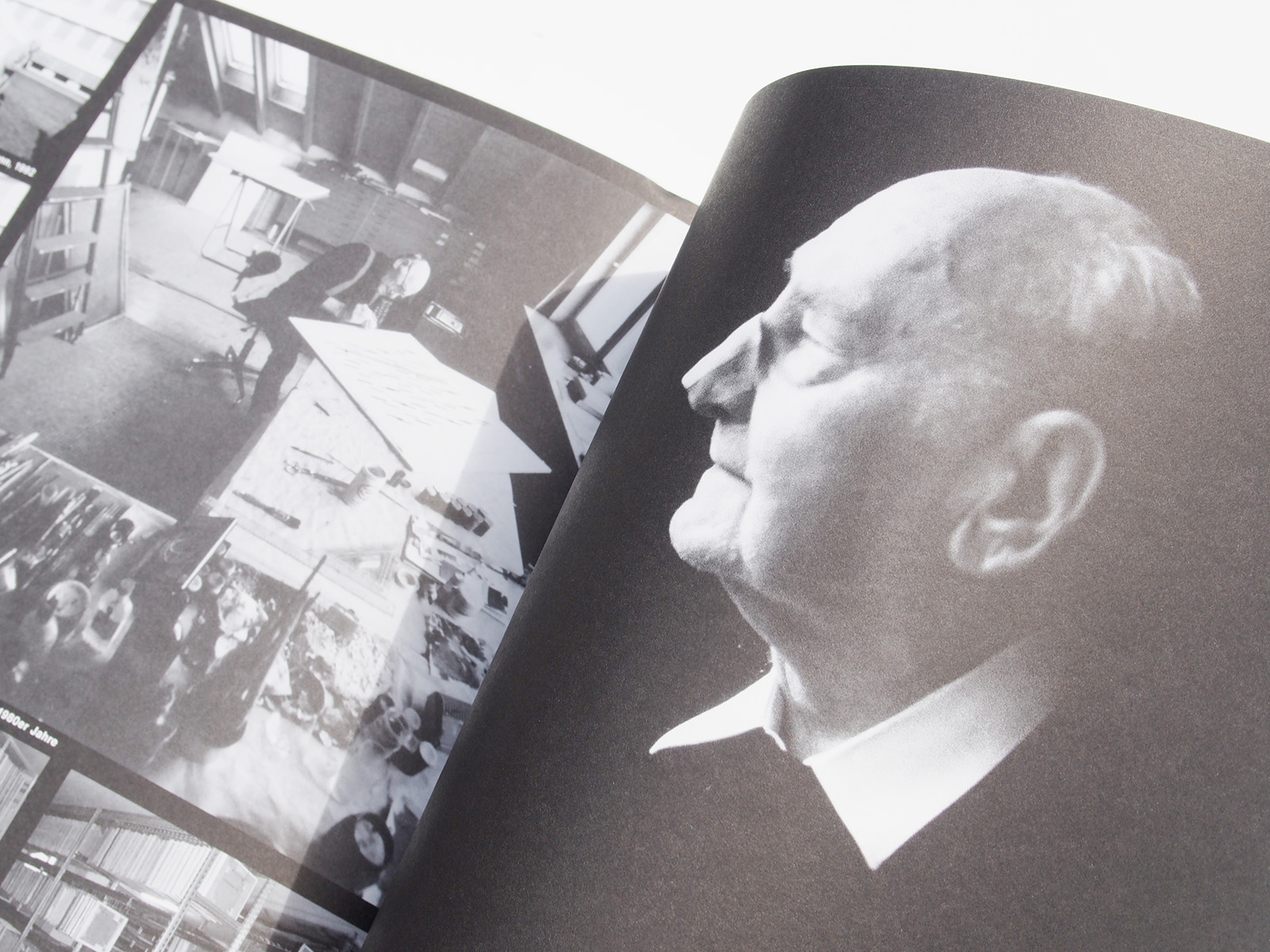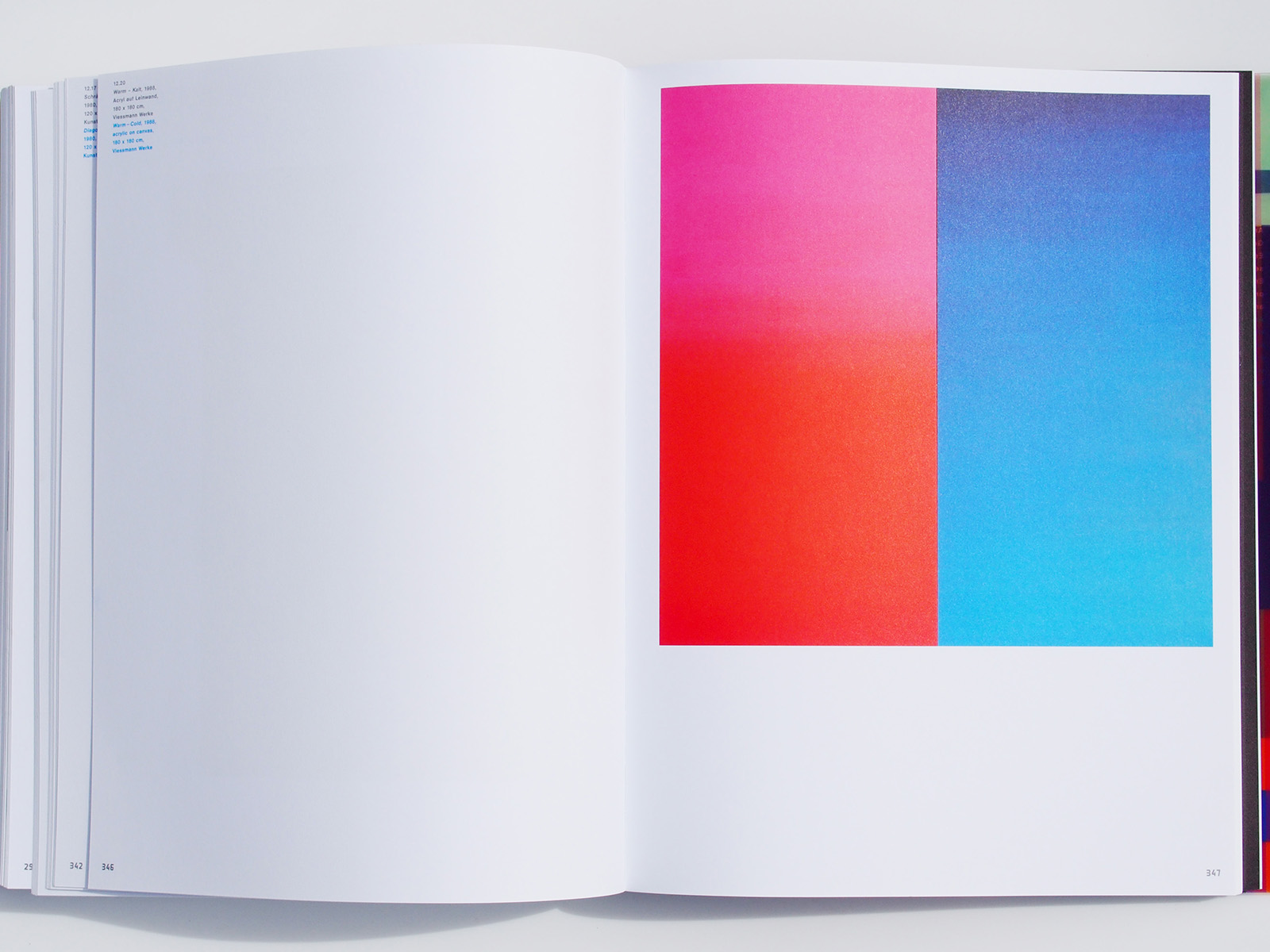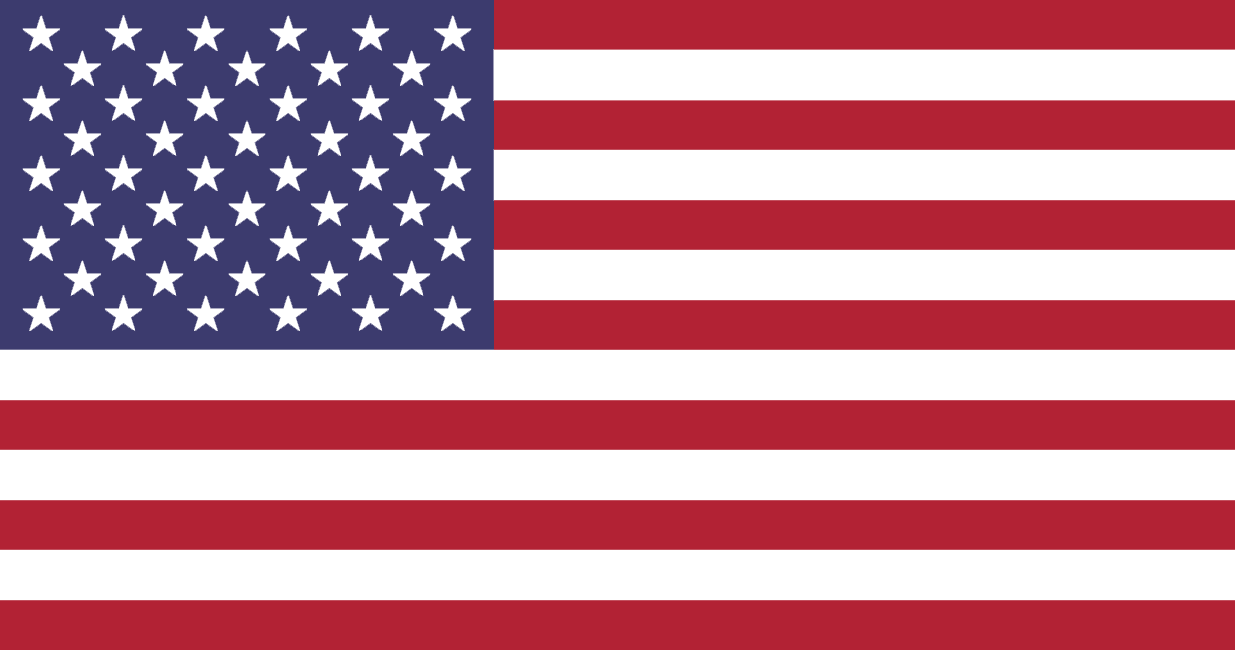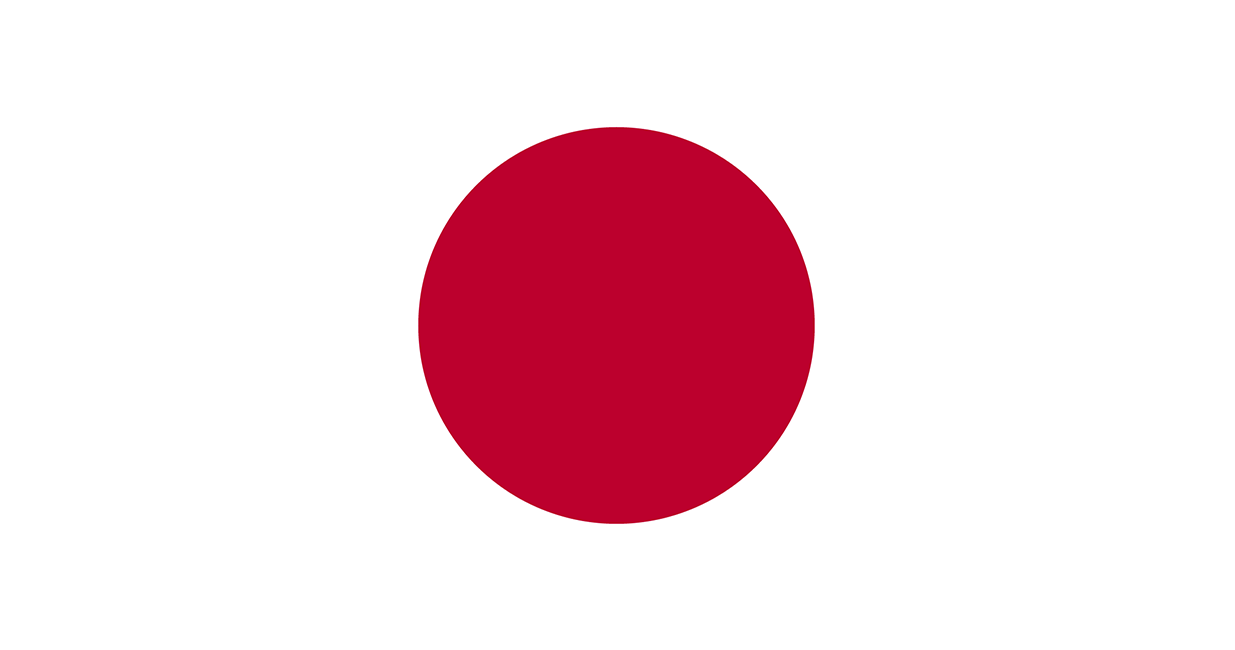Publisher: Hatje Cantz
Language: English German
ISBN-10: 3775717439
ISBN-13: 978-3775717434
Product Dimensions: 31.6 x 24.2 x 4.3cm
Release Date: 2006
Price: sold
“The Most Beautiful German Books Prize,” 2006. A comprehensive tribute to the multitalented Anton Stankowski–in celebration of his 100th birthday.
In his multifaceted artistic activity, Anton Stankowski (1906–1998) always approached his work in terms of the overall design. As a decorative painter influenced by the Bauhaus and a comrade-in-arms of the Concrete artists in Zurich, he began to concentrate on fundamental visual elements in the late 1920s. At the same time, his masterly, abstract photographs, clever advertising graphics, and remarkable company logos were outstanding examples of visualization in the applied arts. In the post-war years, besides his work for SEL, the Süddeutscher Rundfunk, and the Deutsche Bank, he developed a formal theory of design and also produced many paintings and high-quality prints. In celebration of the centennial of Stankowski’s birth, this monograph will present the entire spectrum of Stankowski’s surprising and inventive designs, which continue to set standards to this day.
via Hatje Cantz
Anton Stankowskiの生誕100周年にあわせて出版された作品集です。
アントンはMax Bill, R.P.Lohseとの交流もあり、非常に影響を受け合ったと思いますが、一線を画するものです。
非常に純粋なグラフィックへの探求を感じることができ、どれも実験的でグラフィック、写真、広告までの多岐にわたる作品が収録されています。ドイツ語と英語のバイリンガル構成となっていて、エディトリアルも非常にきれいです。
Anton Stankowski was born in Gelsenkirchen, Germany on 18 of June 1906. He apprenticeship for couple years as a decorative painter before meet his most influential teacher, Max Burchartz at the Folkwangschule, Essen. He worked shortly as a freelancer for Canis Advertising Agency in Bochum. At the end of the 1929, he was invited to work in the one of most prominent advertising studio, Max Dalang in Zurich where he developed a prototype for contemporary advertising style called “constructive graphis”. He also met Richard P Lohse, Max bill, Verena Loewensberg, Hans Neuburg and others who later became known as “Zuricher Konkreten.” In 1939, he established his own studio called Grafische Atelier in Stuttgart but shortly he was drafted into army and had to go to war. In 1972, Karl Duschek became his partner at the Grafische Atelier where they develop one of my favorite logos, Deutsche Bank. At the end of his life, he devoted himself into painting. in 1998, he passed away and German Artist Federation awarded Stankowski the honorary Harry Graf Kessler Award for his life work.
via Thinking Form
